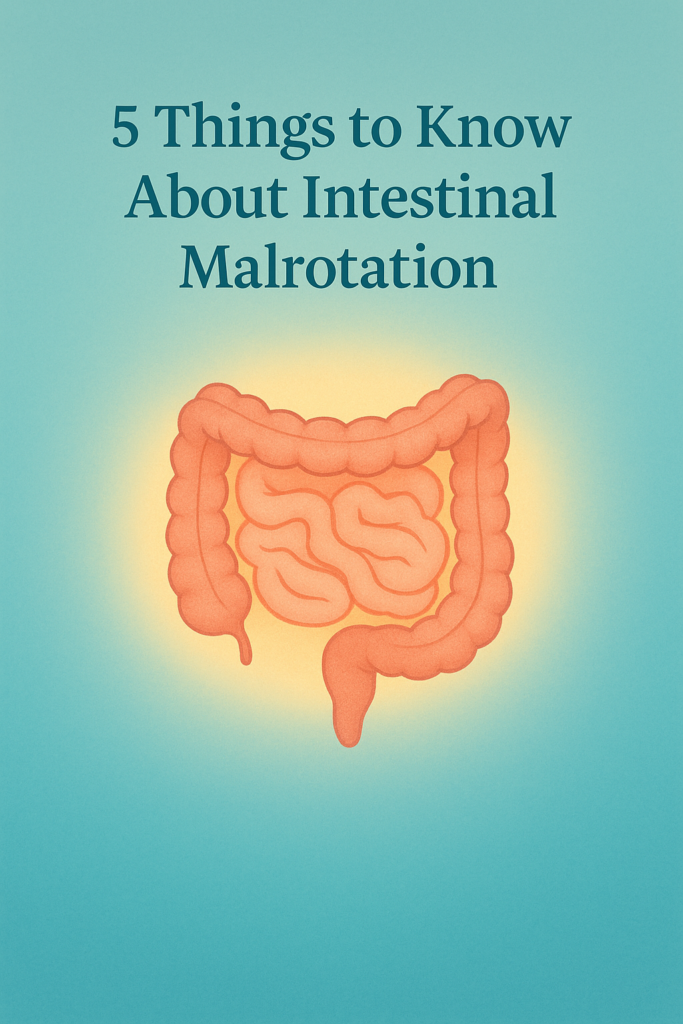
When you first hear the words “intestinal malrotation,” it can feel overwhelming, confusing, and honestly, a little isolating. Trust us—you’re not alone. Whether you’re a parent navigating this for your child or an adult dealing with your own diagnosis, here are five key things you need to know about intestinal malrotation.
1. There is no “fix.”
Let’s get this out of the way first: Malrotation isn’t something you can cure or outgrow. Surgery can help manage some of the risks (like volvulus), but even after surgery, malrotation is a chronic, lifelong condition. It’s something you live with, not something you can completely “fix.”
2. There are multiple surgical options.
You might hear about the Ladd’s procedure a lot — and for good reason. It’s the most common surgery for intestinal malrotation. But it’s not the only one. In more complex cases, patients often undergo the Kareem procedure, a more extensive surgery designed to create better long-term outcomes for motility and function. Different surgeons, different hospitals, and different patients often mean different surgical paths. There’s no one-size-fits-all.
- Ladd’s Procedure– Traditional surgical approach to untwisting the bowel and repositioning it to reduce future volvulus risk. Created to address volvulus, not as a cure for an anatomical defect. Medical experts are not sure why it relieves symptoms for some but not for others.
- Kareem Procedure– Reconfigures the intestines in an anatomically normal position. Often relieves chronic pain and motility issues; results vary based on the severity of the condition.
3. Research is happening- and it’s Exciting!
For a long time, malrotation was seen as a rare, “one and done” childhood condition. But now, both medical professionals and patient-led groups are pushing for better research and understanding. Organizations like the Intestinal Malrotation Research Alliance (IMRA) out of the University of Oklahoma are pushing forward, studying not just surgical techniques, but genetics, motility issues, and long-term outcomes. The group published the IMPOWER Paper, the first patient-generated registry for intestinal malrotation, and hosts annual conferences bringing together the medical and patient community.
Surgical advances have also been made within the last decade that allow intestinal malrotation patients access to treatment based on their unique symptoms and presentation. Notable contributors to the field include Dr. Kareem Abu-Elmagd, who created the Kareem Procedure (Gut Malrotation Correction Surgery) at the Cleveland Clinic, and Dr. Giuseppe D’Amico, who now practices at HCA HealthONE Presbyterian St. Luke’s.
4. It’s not just a kid thing.
Many people are diagnosed as babies, but adults can (and do) have malrotation too. Some adults find out after years of unexplained symptoms. Others have known since childhood but continue to struggle with chronic illness into adulthood. Malrotation doesn’t “go away” with age. It’s a lifelong condition, and adult patients often face unique challenges in finding doctors who understand how to manage it.
5. Motility issues are very common.
Even after surgery, motility problems—meaning issues with how food and waste move through the intestines—are extremely common. Pain, bloating, nausea, constipation, diarrhea…it can be a lot to manage. These are not “just in your head” and can seriously impact quality of life. Understanding this is key to finding treatments and lifestyle adjustments that actually help.
Living with intestinal malrotation can feel isolating because it’s still considered “rare,” and so much of the medical community isn’t fully up to speed. Find your people in the Malro Fighters community. Whether you’re a parent, a patient, or both, there’s a place for you here. We get it because we’re living it too.







